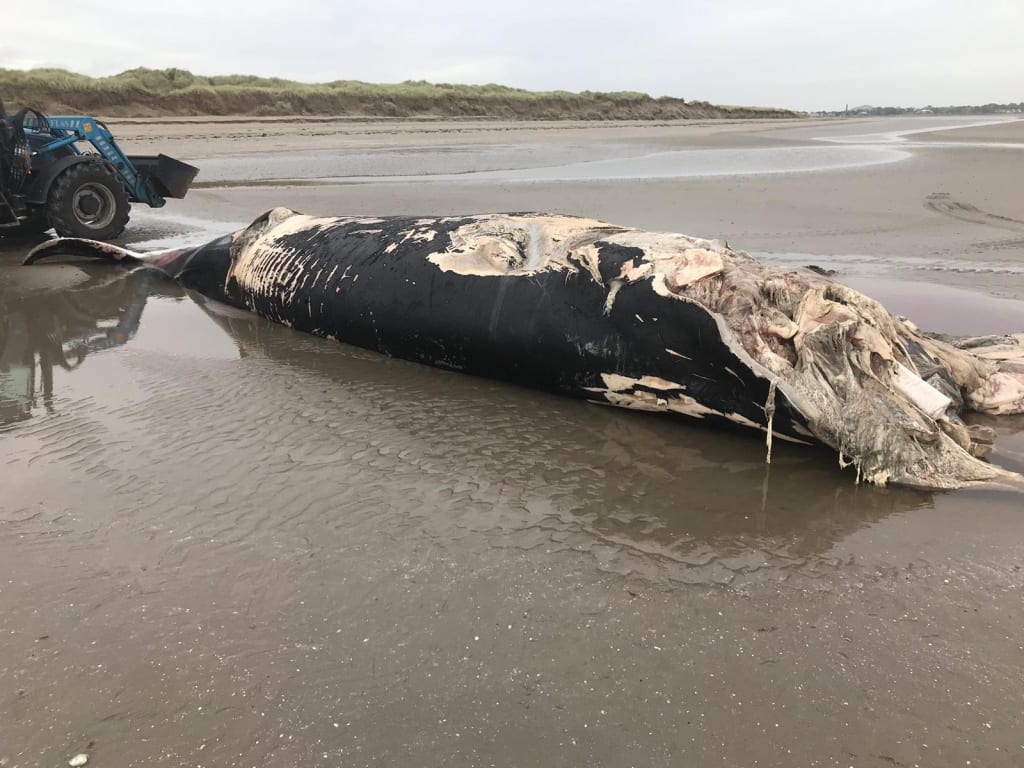IWDG visited the stranded fin whale on Dollymount Strand today before it was buried. Sibéal Regan and Conal O’Flanagan measured the whale at 11.7m and determined it to be a male. Thanks to Pat Corrigan and Dublin City Council for waiting for IWDG before burying the whale to enable us to get valuable samples. Some pictures from today taken by Sibéal Regan/IWDG.
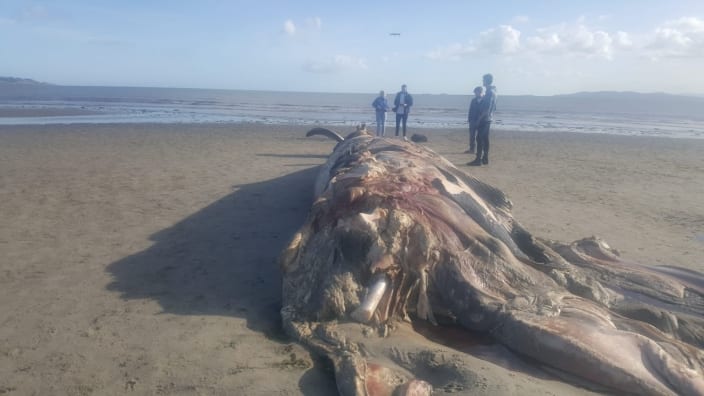
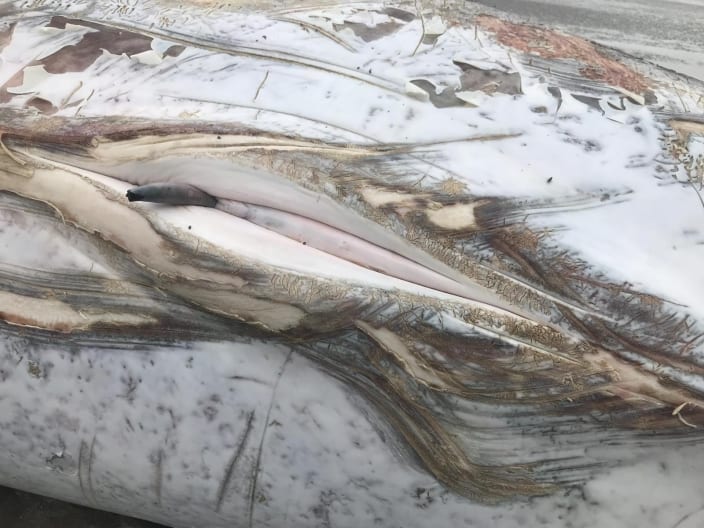
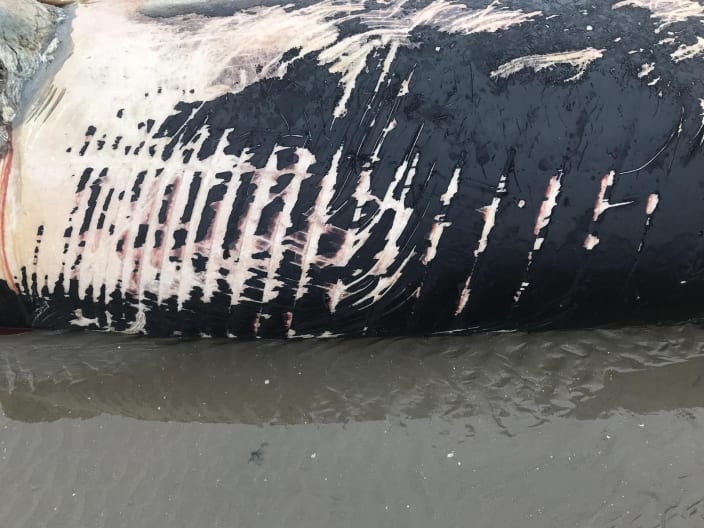
Lacerations on back, possibly from a propeller. Photo by Sibéal Regan/IWDG
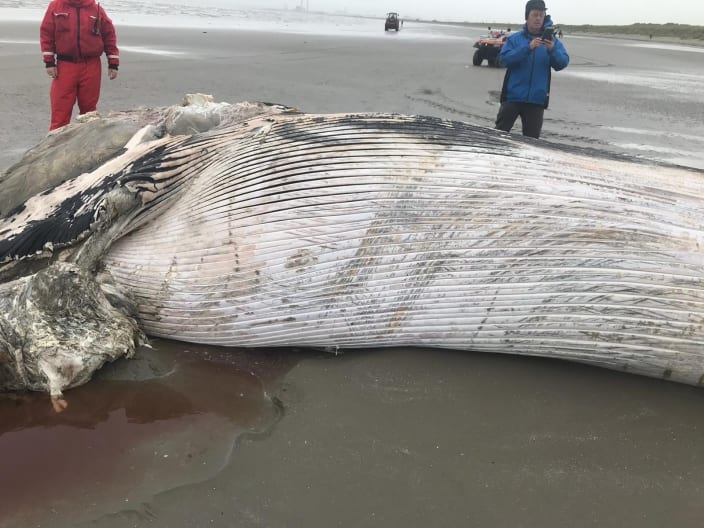

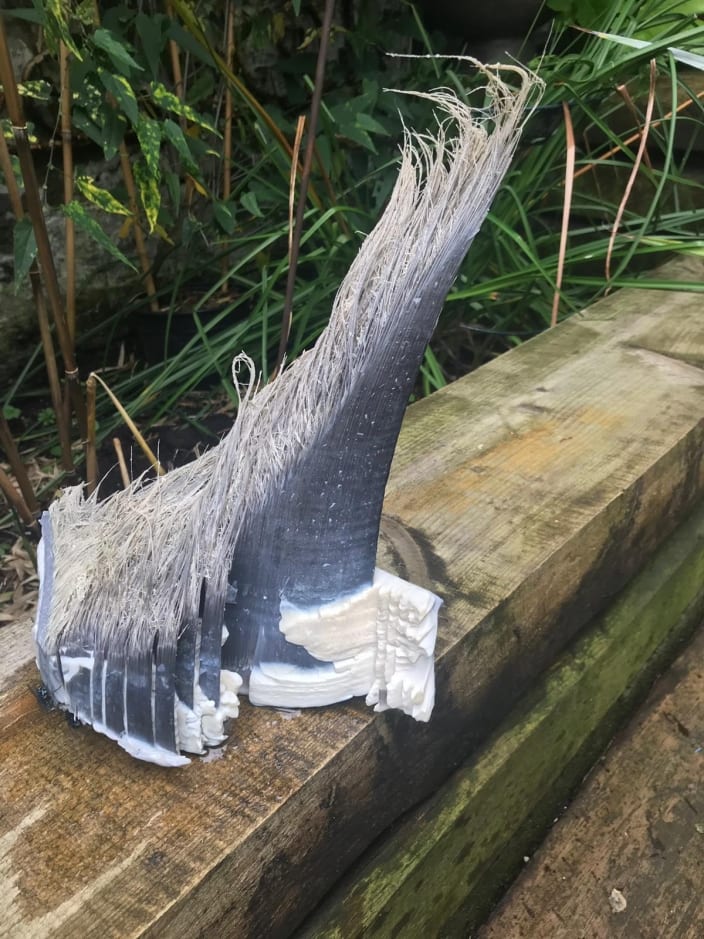
Dublin Bay Fin whale washed up on Dollymount Strand Sunday 6th October….
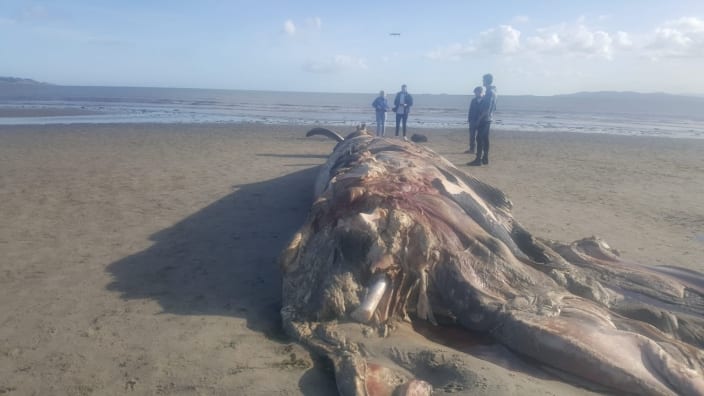
Fin whale washed up at Dollymount Strand Image Donna Cooney
The whale washed up on Dollymount strand today is almost certainly the same whale that died in Dublin Port and was towed out to sea on Saturday 5th October The IWDG will take samples for genetics and to look at contaminant burdens but to try and establish the cause of death would be a large undertaking and beyond the resources of a small wildlife NGO, without the collaboration of competent authorities. It’s a sad end to this story but it never looked like it would end well……
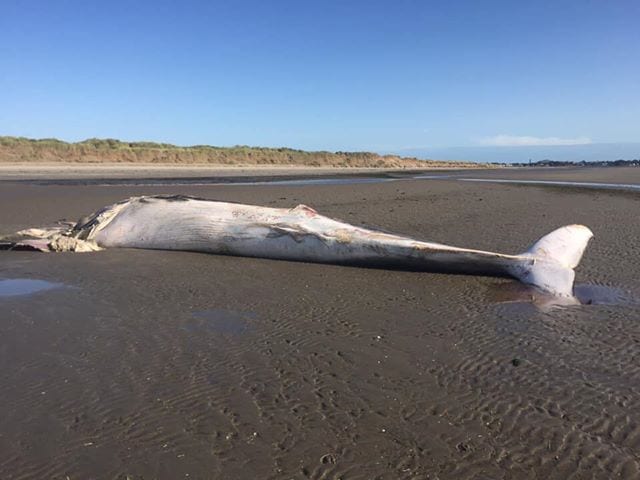
Fin whale washed up at Dollymount Strand Image: Mark Collins
There has been some criticism that there has been no attempt to establish cause of death and towing this whale out to sea is a wasted opportunity to find out what killed the whale and learn more about them.
Carrying a post-mortem on a dead large whale or responding to a live stranded large whale is not easy. the logistics and resources required are huge. IWDG has been calling for a formal procedure to be established whereby state assets such as local authorities, coastguard, Regional Vet labs have all agreed to collaborate in a response and this kicks in immediately once an agreed event has occurred and no time is lost trying to seek support and access resources.
Wednesday 2nd October, 2019
The Irish Whale and Dolphin Group (IWDG) first got reports of a large whale swimming close to land off Sutton, Co. Dublin on Tuesday the 1st of October. Based on initial descriptions of the animal it was thought to be a probable minke whale, Ireland’s smallest baleen whale. However, as the animal moved closer inland and into Dublin Port more images and videos became available. The animal was then identified as a fin whale.
Fin whales are the planet’s second-largest animal after the blue whale. Adult fin whales can reach lengths of 18-22m and a diagnostic feature of a fin whale is their white lower jaw and light and dark lines or ‘chevrons’, which can be seen behind the head. Our best guesstimate was that this specimen was in the 9-13m length range, which suggests it was likely to be a juvenile.
Fin whales can be present particularly off the Irish South Coast in inshore waters of the Celtic Sea from summer through to early winter, where they feed on small pelagic shoaling fish such as sprat and herring. In offshore waters, they are likely to feed on Atlantic krill. The Irish fin whale photo-ID catalogue currently recognises over 60 individual fin whales, which can be individually identified by their dorsal fins and unique markings along their flanks. Fin whales can on occasion be seen relatively easily along the Waterford and Cork coasts from headlands during periods of settled weather, which bring calm seas and clear air. The months from October to January are best for land-based sightings. Good optics are essential to detect their distant blows, as they generally remain several miles away from the shore.
It is highly unusual for large whales of any species to swim into such shallow water unless the individual is sick, disorientated or both. Without a post-mortem, we can only speculate on the cause of death. Post-mortems on large whales such as fin whales are extremely difficult due to their size which creates major logistical issues. Furthermore, necropsies on large whales that have died under these circumstances are no guarantee that a “cause of death” will be established.
Given the circumstances surrounding this fin whale, the outcome although saddening was the most likely outcome and it was in all probability doomed long before it entered Dublin Bay and the port. The carcass has been brought out to sea where it will be naturally predated on, however, there is a strong possibility that it will float back to shore in the current big seas.
Sibéal Regan, Education & Outreach Officer, IWDG
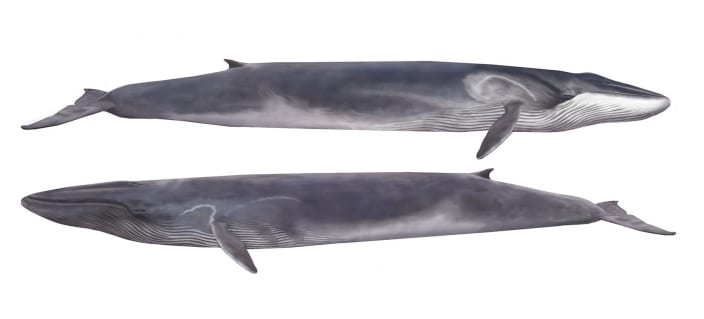
Fin whale illustrations © William Helps

